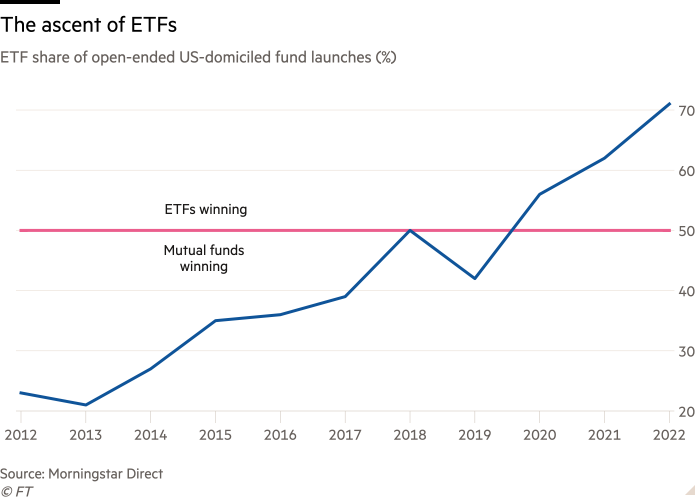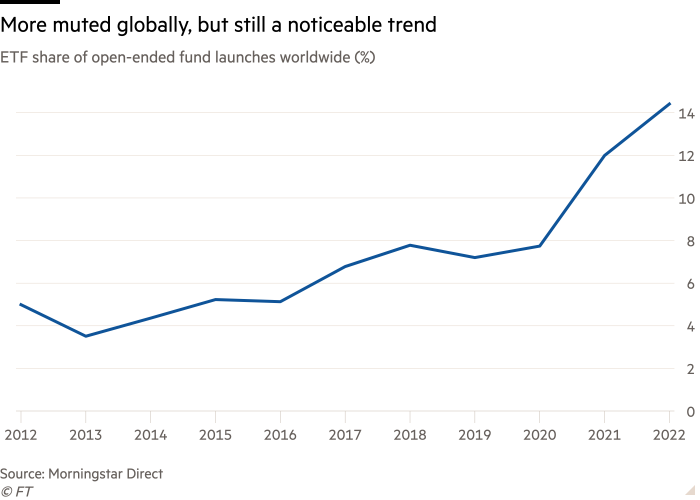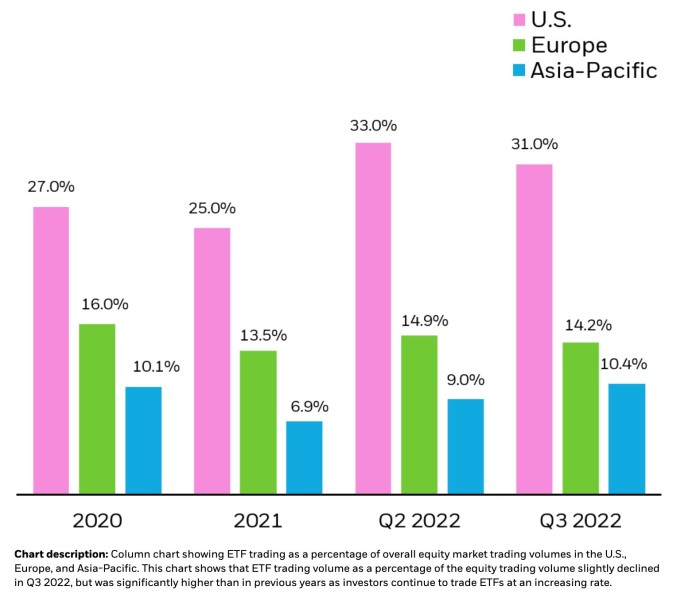The (American) age of ETFs

Roula Khalaf, Editor of the FT, selects her favourite stories in this weekly newsletter.
FT Alphaville highlighted on Monday how even Fidelity is now starting to convert some of mutual funds into ETFs. But the latest data on the ascent of ETFs is even starker than we imagined — at least in the US.
Rocky markets have meant that this is a bad year for fund launches in general, with only 576 open-ended funds inaugurated in 2022, according to Morningstar. That is the lowest in at least a decade.
But the ETF keeps gobbling up market share. So far this year there have been 407 ETFs launched in the US compared just 169 other types of open-ended funds — smashing past the previous record.

Worldwide the shift is far less stark, but still noticeable. The ETF share of global open-ended fund launches tracked by Morningstar has almost trebled over the past decade, from 4.99 per cent in 2012 to 14.42 per cent so far in 2022.
As we discussed in the last post, the exploding popularity of ETFs in the US is largely thanks to tax advantages and their ease of use for financial advisers that dominate distribution on that side of the Atlantic. In Europe distribution is dominated by banks, and in Asia there is still more of a retail trading environment.
But this is still a pretty clear trend.

This isn’t just an investment industry back-office issue either; it is having a knock-on impact on broader financial markets.
In the US, ETFs now account for about a third of ALL equity trading. Even in Europe they make up about one-seventh, and one-tenth in Asia, according to a recent BlackRock report. Global ETF trading volumes in the first nine months of the year has surpassed 2021’s total.

How far will this go? No trees grow forever, but it feels like it could go a lot further yet.
The main questions are probably whether ETFs will only dominate in the US, or if they will start to explode in a similar fashion in Europe and Asia; and whether there is another next-gen investment vehicle out there that could in turn disrupt the ETF.
We’re sceptical that direct indexing is ever going to rival the ETF in size, but open to being proven wrong.
Further reading:
Fido (hearts) ETFs
The age of the ETF is looming
As the ETF world booms, so do the risks
Passive attack: the story of a Wall Street revolution
(deeply conflicted gratuitous bonus link)
Comments